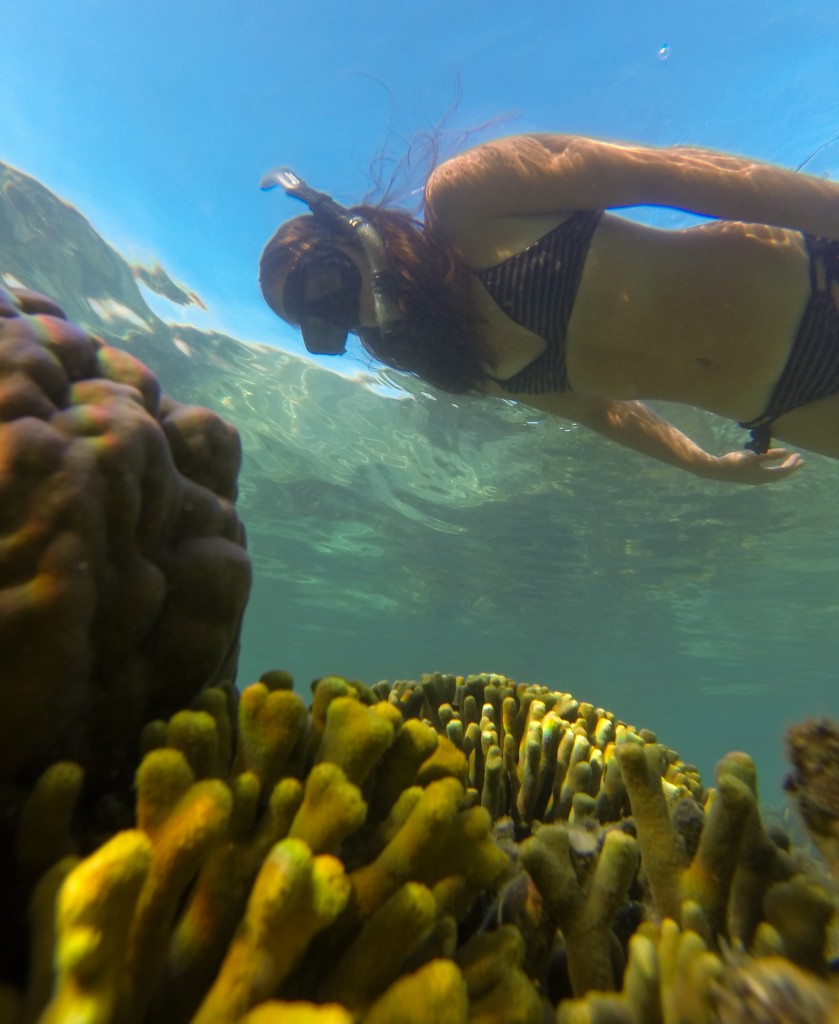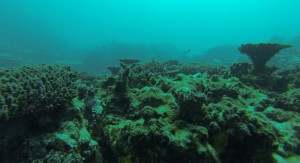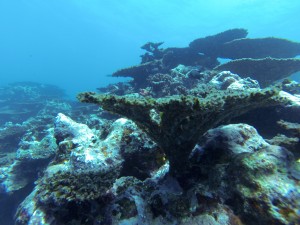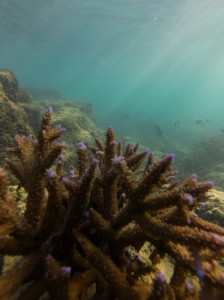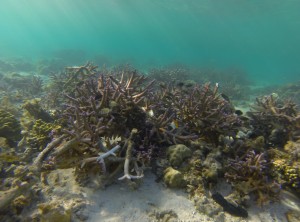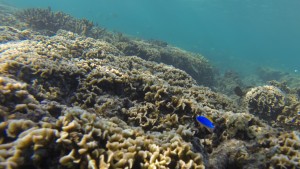OK first the bad news.
The reef seemed like a coral graveyard. We swam a good 30 meters down what was once a thriving coral wall, and saw almost nothing. Well, almost nothing alive, that is. Where once soft corals and all manner of sea creatures thrived, only skeletons remained.
Over and over I kept thinking – there should be TONS of life here. But there just wasn’t. No tiny fish squiggling around, no big fish chasing little fish, no shrimp tucked into crevices, no eels poking out of holes. What we did see was the crown of thorns starfish eating everything in sight. Our divemaster Joe told us that the deep coral just offshore from Samoa’s main island Upolu began bleaching more than a decade ago, and then the crown of thorns starfish moved in to eat whatever was left.
The water was warm, the seas unpolluted, yet everything seemed empty. Imagine the undersea equivalent of Chernobyl – with its empty husks of buildings, playgrounds, homes– and you can see how disconcerting it was.
Sadly, coral reefs like this one are facing mass die offs all over the tropics. It’s one thing to read about it in National Geographic, but it’s quite another to jump in the water, expecting to find a myriad of life, only to see remnants of what once was.
We had expected to spend two or three days scuba diving around Samoa, but after that first dive, we had no choice but to change our plans.
Now the good news: in the shallows, life still abounds.
Our second day in Samoa found us at a small marine preserve a few hundred meters from downtown Apia. Normally swimming near a capitol city is asking for murky waters and swimmers itch, but as we snorkeled just offshore, we were pleasantly surprised. Tiny fish darted everywhere, the best of which was a tiny pipefish that resembled a seahorse. But there were other cool creatures as well. Most everything was small making snorkeling more of a macro experience, but at least the coral was in good shape and there was plenty to keep us busy.
Things were the same around the rest of the island of Upolu. When we changed our expectations from seeing big stuff to seeing small stuff, we could float around and enjoy what the sea had to offer. Instead of hunting big schools of snapper or turtles, we had to slow our roll and focus on a single head of coral where, over the course of several minutes, we could enjoy the communities of life that abounded within.
I’m not a marine biologist, so I can’t say for sure why the life in the shallow protected parts of the island were still going strong, while the big coral walls were dead, but as a visitor, I can say that if you are traveling to Samoa expecting a terrific scuba diving experience, you’d better stick to nearby Fiji. Save your money (it’s ridiculously expensive anyway) and pack your mask and snorkel instead. Almost every beach has decent snorkeling just offshore, it’s free and you’ll find more than enough to keep yourself busy on your holiday.
